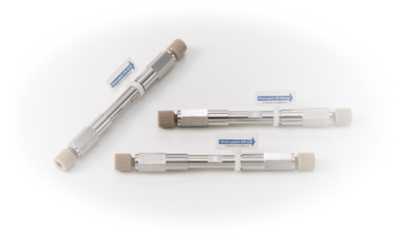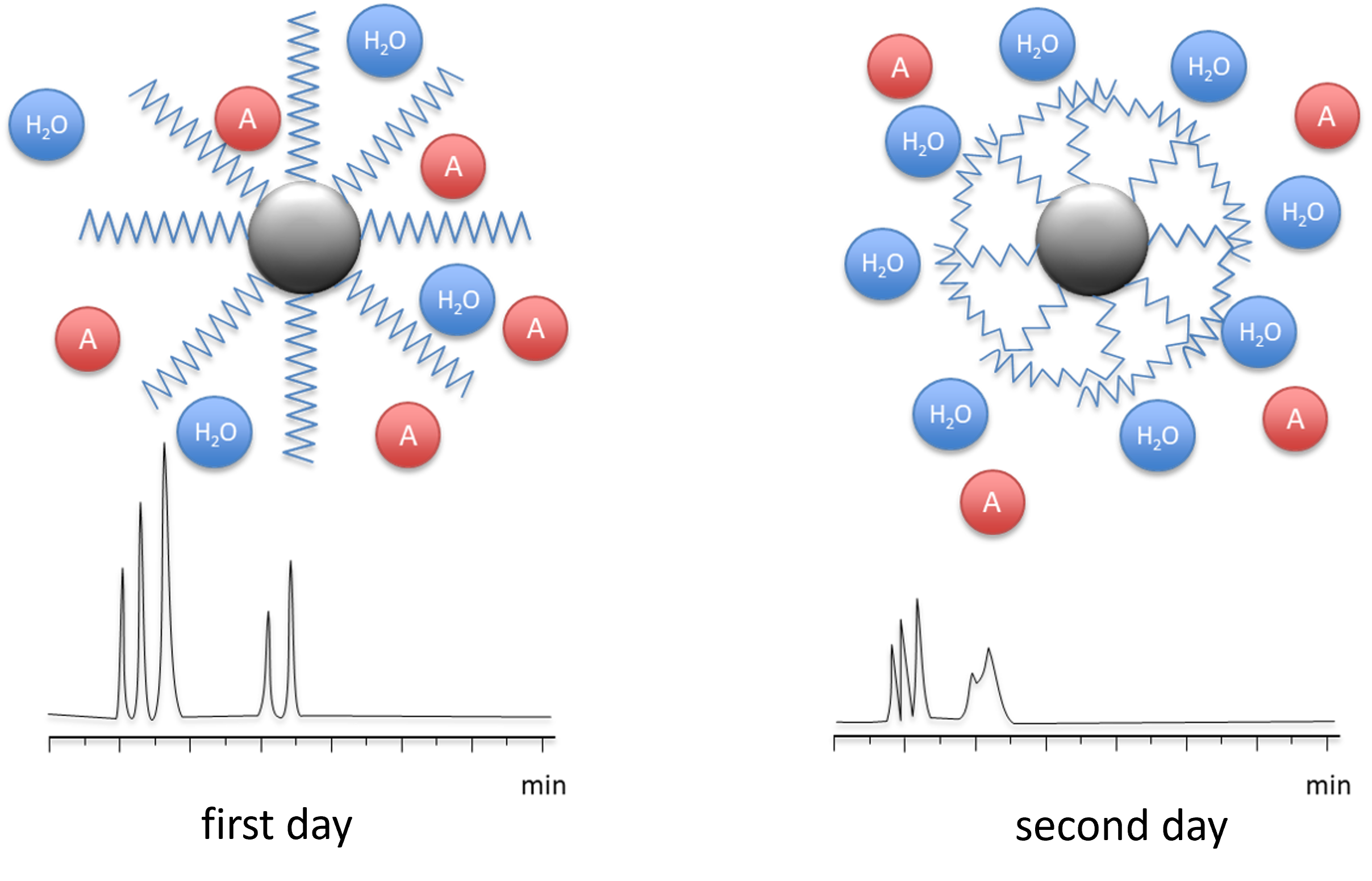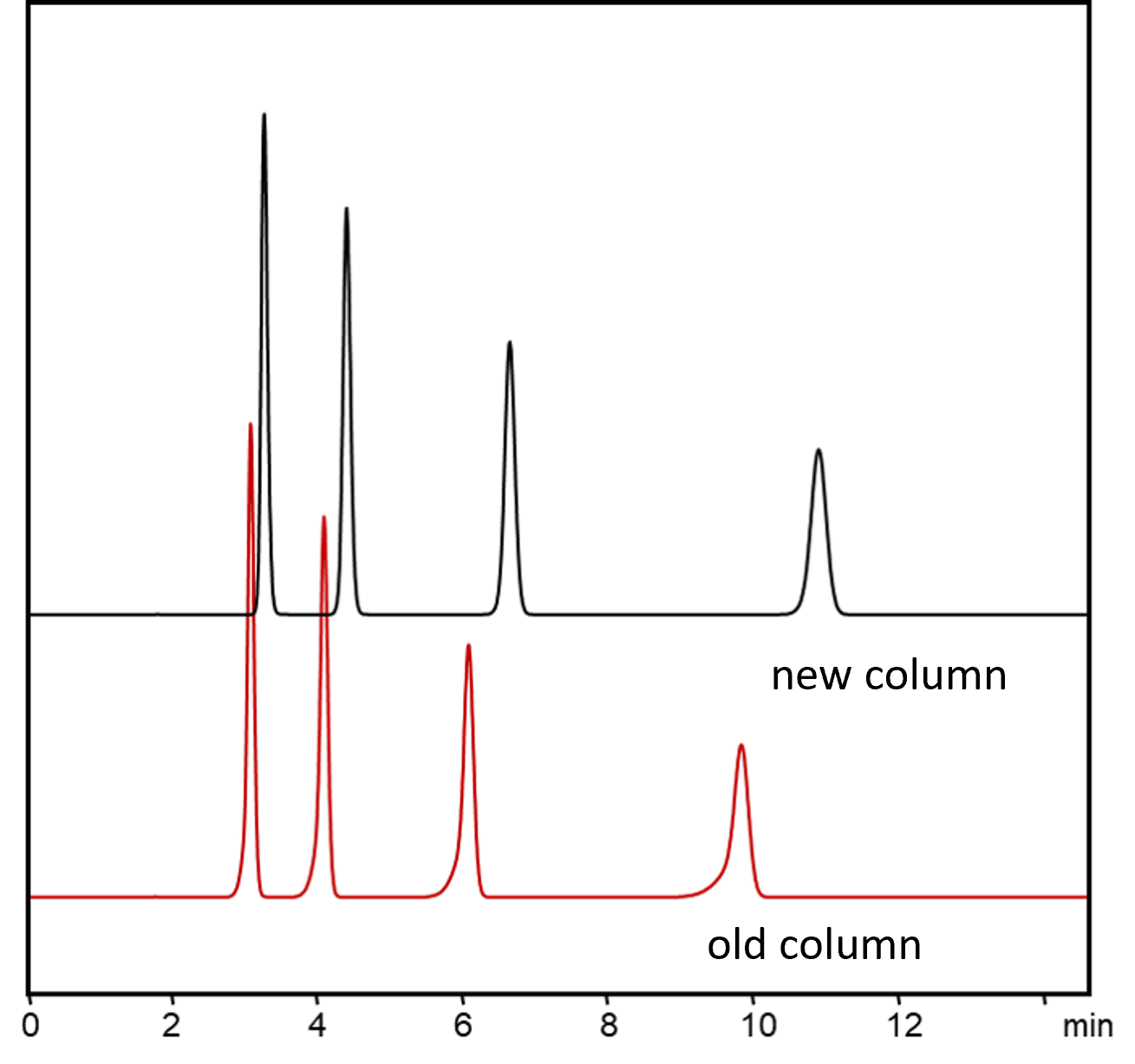Nexera UC improves your analytical workflow by utilising a completely new separation technology, Unified Chromatography, which unites sample separation, analysis with various separation modes, and high-sensitivity detection.
Column Lifespan - Part 2
HPLC Troubleshooting Course
12 - Column Lifespan - Part 2
13 - Detector Issues
14 - Flow Line Leakage
15 - Course Summary

The first part of "Column Lifespan" deals with the general handling of an HPLC column, avoiding blockages due to particles and crystallization. The second part explains further factors that can contribute to the longevity of the column.
1. Use of High Water Content

Most reversed-phase (RP) columns are note compatible with 100% aqueous conditions, due to pore dewetting. This phenomenon occurs when pressure is removed from the system which causes water to be expulsed from the hydrophobic pore network. This results in a loss of retention time and poor reproducibility. To avoid this situation, ensure you follow the manufacturer's guidelines for minimum organic content in the mobile phase, or do not remove the pressure from the system before adding organic solvent to the stationary phase.



If you still want to work with a very high aqueous content, special columns can be used, often marked with the abbreviation AQ.
2. Storage of the Column

- It is generally safe to use the same storage solution as that used for the shipping of the column (see manufacturer's instructions). A typical storage solvent for a RP column is 50:50 v/v Water:Acetonitrile.
- Keep a record of the storage solution and final usage conditions together with the column.
- Screw an airtight stopper into the end of the column. Do not allow the packing material to dry out!
- Store the column in a place where it is not subject to shocks or sudden temperature fluctuations.
3. Defective Column and Precolumn

The right figure shows a chromatogram of a new column compared to a chromatogram of an older column. In the older column, you can see significant fronting of all peaks.

To get a good picture of the column's performance, you can replicate the same analytical conditions as in the inspection data provided with the column and compare them with the test chromatogram. If a precolumn is used, it should be removed, and the analysis repeated.

As mentioned in the last two parts, certain precautions can be taken to ensure the longest possible lifespan of the column.
In the upcoming course unit, we will deal with the topic of detectors.
Your Shimadzu LC Team



